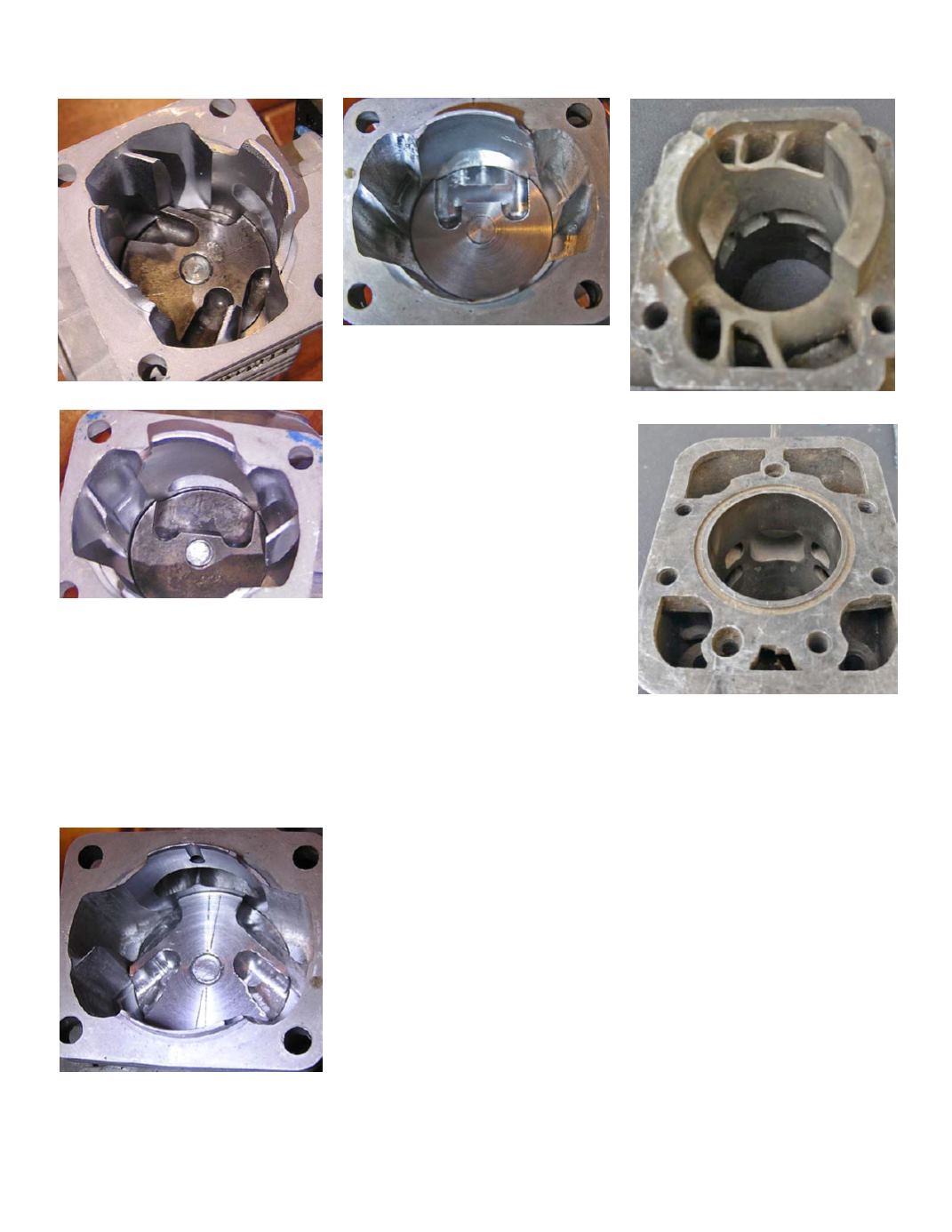
The more gradual transfer passage
curve causes the flow out of the ports to
follow the port angle. That way the front
transfers can be aimed up and back to
avoid flowing out the exhaust. The rear
transfers can be aimed at each other to
create a slow rising column in the back
half of the cylinder and the boost ports
can be angled up to scavenge the back
wall and the combustion chamber. This
improves the scavenging and therefore
the power of the engine. The auxiliary
exhaust ports increase the blow down
area, allowing a quicker reduction in
cylinder pressure before the transfers
open. Using more of the cylinder wall
for ports, increasing port area, allows
higher rpm for the torque peak giving
more power as well.
(Continued on page 8)
PROPWASH
April 2016
7
Here the front transfer has been left
stock. However, the slug is cut as a
template to square the front edge. The
rear transfer passage is stock height but
has been widened a lot and the port
eyebrowed over the intake port. The
“slug” shows a wider eyebrow, but this
is not critical. The eyebrow has limited
effectiveness due to the limited depth
that’s possible. The exhaust has been
raised and widened at the top. Notice
that the top edge of the port is slightly
lower at the ends. This arched shape is
gentler on the rings than the straight
across port the “slug” is cut for. Because
of the poor transfer passage design, up
angles on the transfers aren’t helpful.
Most builders keep the transfer roof flat
and maintain the stock horizontal angles.
The flow out of the port will be a wide
spray that is partially directed by the
horizontal angles. These aim the flow
toward the back of the cylinder to keep
mixture from flowing out the exhaust.
The cylinder design can be improved
considerably by adding an inner wall to
the transfers. As was mentioned in the
previous article, doing that and
deepening the eyebrow area adds nearly
1 hp to the M&D cast cylinder over their
modified cylinder. Adding more curve to
the inner transfer wall as well as
enlarging the porting in general gives
Quickdraw Pioneer’s even more power,
especially when their conservative
timing is increased.
The cylinder to the right is probably
one of the best piston port cylinder
designs to date. It has auxiliary exhaust
ports, boost ports, and the standard four
side ports.
The pictures show how much needs
to be taken off, especially in the exhaust
port. The transfers can be left stock, but
the wider passage and eyebrows will
really help increase the rear transfer
flow. Note that the front transfers in the
stock engine open slightly later than the
rear transfers. Thinning and/or
shortening the transfer divider is
sometimes done as well.
Transfer Slug in Stock Cylinder
Exhaust Slug in Stock Cylinder
Transfer Slug in Modified Cylinder
Exhaust Slug in Modified Cylinder
Piston Port Cylinder Transfers
Piston Port Cylinder Exhaust


